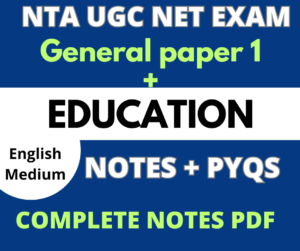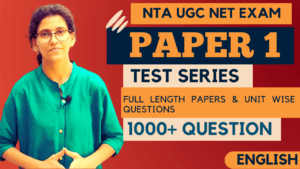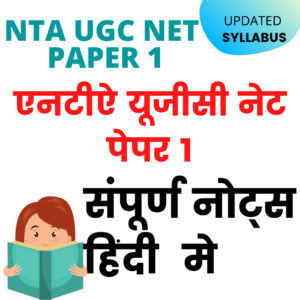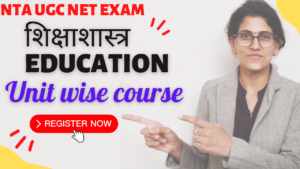Q1 Who is traditionally known as the “Father of Yoga”?
A. Buddha
B. Patanjali
C. Sankara
D. Krishna
Answer: B. Patanjali
Explanation: Patanjali is traditionally considered the author of the Yoga Sutras and is often referred to as the “Father of Yoga”.
Q2 The Yoga Sutras of Patanjali outline how many limbs (or steps) of Yoga?
A. Four
B. Six
C. Eight
D. Ten
Answer: C. Eight
Explanation: The Yoga Sutras outline the eightfold path of Yoga, known as Ashtanga Yoga.
Q3 In the philosophy of Yoga, what is the ultimate goal?
A. Physical strength
B. Mental clarity
C. Samadhi or Enlightenment
D. Emotional stability
Answer: C. Samadhi or Enlightenment
Explanation: The ultimate goal of Yoga, according to Patanjali’s Yoga Sutras, is Samadhi or Enlightenment.
Q4 Which one of these is NOT one of the eight limbs of Ashtanga Yoga?
A. Pranayama
B. Yama
C. Niyama
D. Karma
Answer: D. Karma
Explanation: Karma is not one of the eight limbs of Yoga. The eight limbs are: Yama, Niyama, Asana, Pranayama, Pratyahara, Dharana, Dhyana, and Samadhi.
Q5 What is the term for physical postures in Yoga?
A. Pranayama
B. Dhyana
C. Asana
D. Yama
Answer: C. Asana
Explanation: Asanas are the physical postures practiced in Yoga.
Q6 What does ‘Pranayama’ in Yoga refer to?
A. Ethical principles
B. Breath control
C. Meditation
D. Concentration
Answer: B. Breath control
Explanation: Pranayama refers to the control and regulation of breath in Yoga.
Q7 What is ‘Dhyana’ in the context of Yoga?
A. Posture
B. Breath control
C. Meditation
D. Concentration
Answer: C. Meditation
Explanation: Dhyana refers to meditation, the seventh limb of Yoga.
Q8 The term ‘Yama’ in Yoga refers to:
A. Personal observances
B. Breath control
C. Ethical restraints
D. Physical postures
Answer: C. Ethical restraints
Explanation: Yama refers to ethical restraints or moral disciplines, the first limb of Yoga.
Q9 What does ‘Niyama’ in Yoga refer to?
A. Personal observances
B. Ethical restraints
C. Breath control
D. Meditation
Answer: A. Personal observances
Explanation: Niyama refers to personal observances or self-disciplines, the second limb of Yoga.
Q10 The term ‘Pratyahara’ in Yoga refers to:
A. Sense withdrawal
B. Concentration
C. Breath control
D. Posture
Answer: A. Sense withdrawal
Explanation: Pratyahara is the practice of withdrawing the senses from external objects, the fifth limb of Yoga.
Q11 The term ‘Dharana’ in Yoga refers to:
A. Breath control
B. Ethical restraints
C. Concentration
D. Posture
Answer: C. Concentration
Explanation: Dharana refers to concentration or the practice of focusing the mind, the sixth limb of Yoga.
Q12 According to Yoga philosophy, ‘Samadhi’ is:
A. The ultimate state of consciousness
B. Physical posture
C. Breath control
D. Ethical restraints
Answer: A. The ultimate state of consciousness
Explanation: In Yoga philosophy, Samadhi refers to the ultimate state of consciousness or Enlightenment, the eighth and final limb of Yoga.
Q13 The physical exercises in Yoga are primarily designed to:
A. Increase strength
B. Promote flexibility
C. Prepare the body for meditation
D. All of the above
Answer: D. All of the above
Explanation: While the physical exercises in Yoga increase strength and promote flexibility, their primary aim is to prepare the body for prolonged meditation.
Q14 ‘Hatha Yoga’ primarily focuses on:
A. Physical postures
B. Ethical conduct
C. Breath control
D. Meditation
Answer: A. Physical postures
Explanation: Hatha Yoga primarily focuses on the practice of physical postures (Asanas) and breath control (Pranayama).
Q15 ‘Kundalini Yoga’ aims to:
A. Awaken the spiritual energy at the base of the spine
B. Improve physical health
C. Develop ethical conduct
D. Enhance intellectual capabilities
Answer: A. Awaken the spiritual energy at the base of the spine
Explanation: Kundalini Yoga aims to awaken the dormant spiritual energy, referred to as ‘Kundalini’, at the base of the spine.
Q16 Which ancient text outlines the philosophical foundations of Yoga?
A. Upanishads
B. Bhagavad Gita
C. Yoga Sutras
D. Vedas
Answer: C. Yoga Sutras
Explanation: The Yoga Sutras of Patanjali outline the philosophical foundations of Yoga.
Q17 In Yoga philosophy, the term ‘Chitta’ refers to:
A. Consciousness
B. Physical body
C. Mind-stuff
D. Breath
Answer: C. Mind-stuff
Explanation: In Yoga philosophy, ‘Chitta’ refers to the mind-stuff or the mental faculty which contains impressions and experiences.
Q18 In Yoga philosophy, ‘Vritti’ refers to:
A. Physical posture
B. Breath control
C. Modulations of the mind
D. Meditation
Answer: C. Modulations of the mind
Explanation: ‘Vritti’ refers to the modulations or fluctuations of the mind in Yoga philosophy.
Q19 The famous quote “Yogas Chitta Vritti Nirodha” means:
A. Yoga is the union of body, mind, and spirit
B. Yoga is the control of breath
C. Yoga is the stilling of the changing states of the mind
D. Yoga is physical exercise
Answer: C. Yoga is the stilling of the changing states of the mind
Explanation: “Yogas Chitta Vritti Nirodha” is a famous quote from Patanjali’s Yoga Sutras and it means “Yoga is the stilling of the changing states of the mind”.
Q20 The Yoga school of Indian philosophy is closely associated with which other school?
A. Vedanta
B. Mimamsa
C. Sankhya
D. Nyaya
Answer: C. Sankhya
Explanation: The Yoga school of Indian philosophy is closely associated with the Sankhya school. They both share similar metaphysical and cosmological concepts.
















